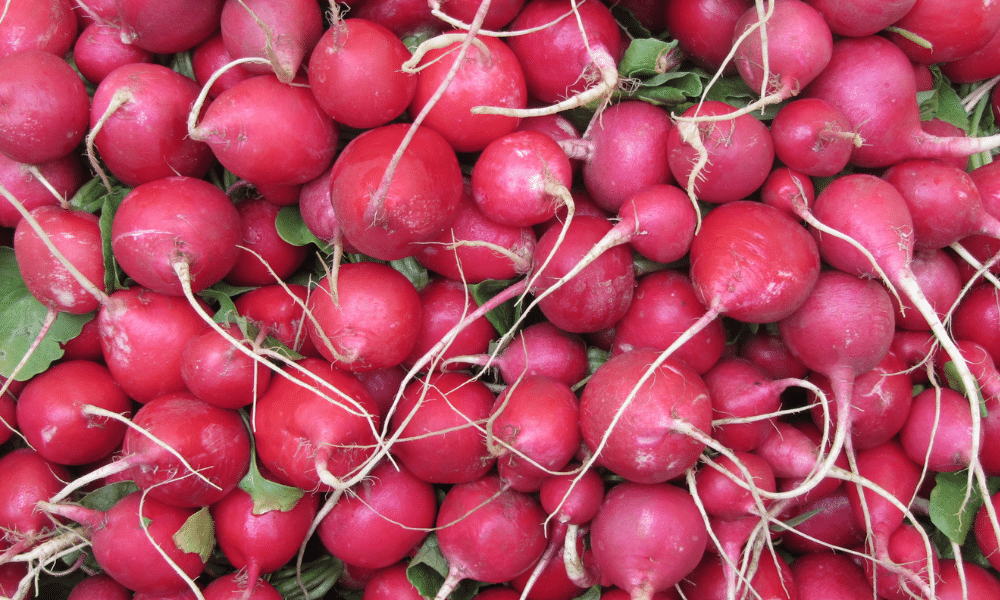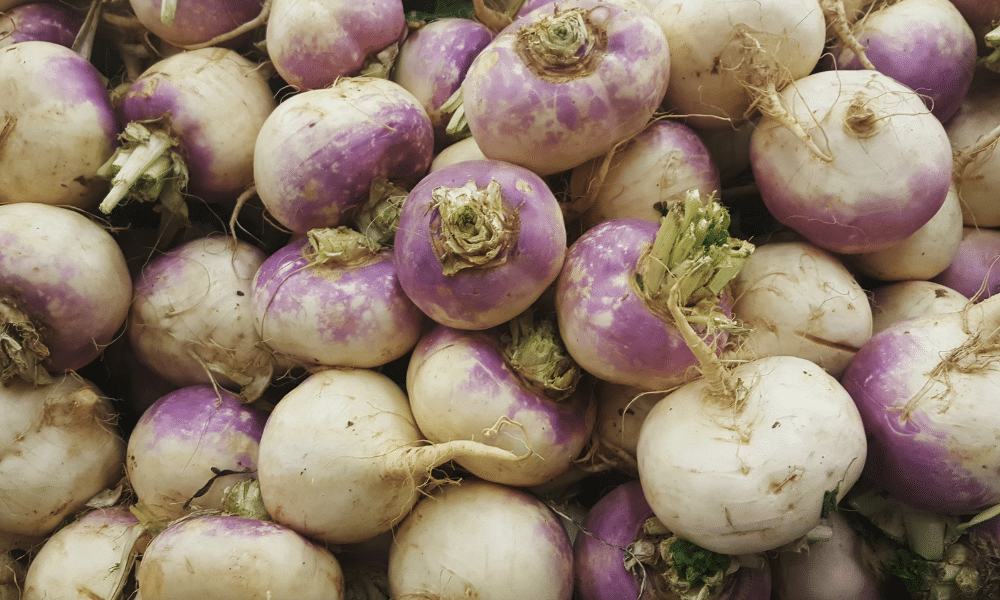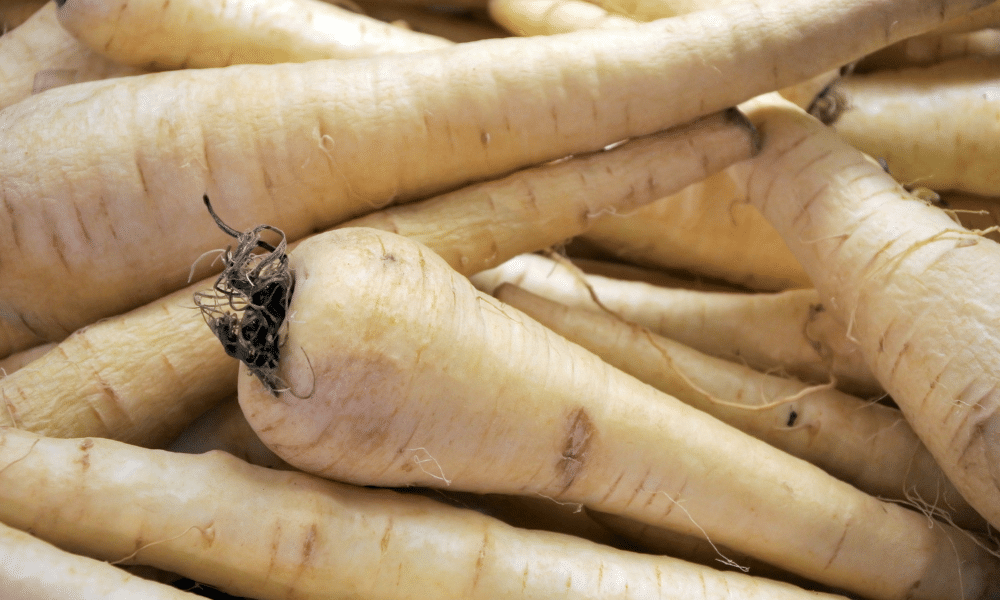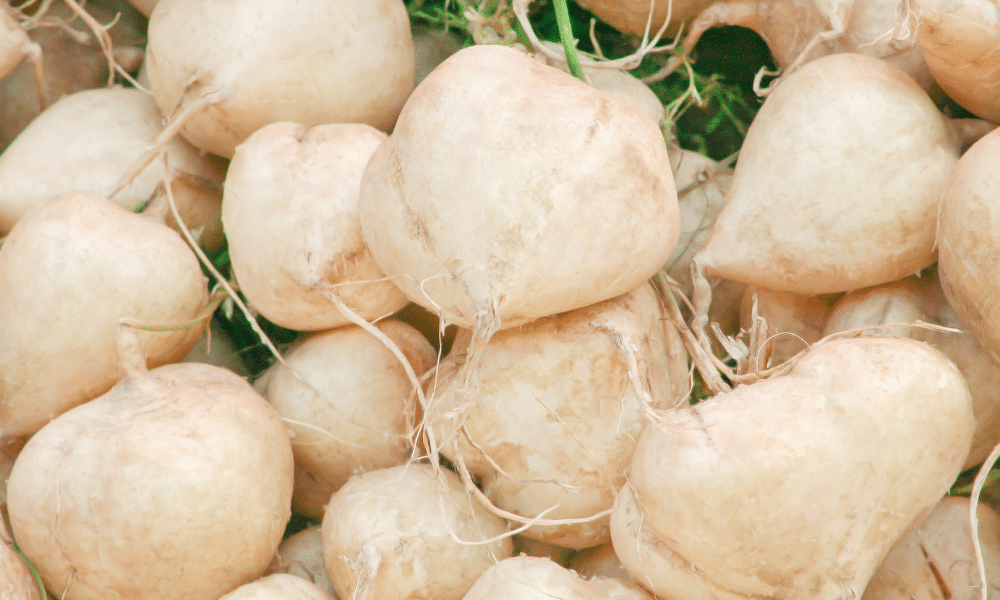A type of white radish, daikon is commonly used in Japanese cooking but also in plenty of other Asian cuisines. It looks like a thicker carrot and can be paired with soups, salads, stews or noodles. It is also often used as a pallet cleanser when eating sushi.
Due to being almost exclusively used in Asian dishes, you will have a tough time finding daikon in a western supermarket. What can you use instead?
Our 4 Substitutes for Daikon
Daikon has a mild sweetness that is met with a slightly spicy kick. Though it is not an overwhelming vegetable in any way. It can take on a range of textures but it is best served when sauteed or crispy.
Here are our top 4 daikon substitutes:
1) Radish
Daikon and radish share a very similar texture being from the same family as each other. They are both very thick and can therefore be cooked in the same way.
Radish does come in a variety of sizes and types, though, so you may not need to cook some radishes for as long if they are generally smaller.
When using radish as a daikon substitute, you will want to mainly use white radish. It will be spicier than daikon but not as much compared to red radish which has a real kick to it.
White radish also has a sweeter flavour, even if that flavour is much stronger than that of daikon.
Balance Out the Pepperiness
If you want to bulk out your dish but don’t want the spice of radish to overpower it, add a little bit of honey or brown sugar to balance out the radishes flavour.

2) Turnip
When cooking a dish requiring daikon, it may already call for the use of turnip.
These are two ingredients that are often paired together in Asian cuisine and are therefore mostly interchangeable as substitutes.
Turnips have just as mild a flavour as daikon which works in its favour as daikon is rarely used as the main ingredient in a meal.
The mild flavour of turnip will make it more versatile and complementary to a wider range of main ingredients, just like daikon. Though it does have a spicy hint like daikon, too.
Turnip can be cooked until it is very crispy, or it can be eaten raw. It does tend to be a lot firmer than daikon when raw so account for this when using it in a salad.
Don’t Overcook It!
Though firmer, turnip does soften very quickly. If cooked for too long, it will turn to a similar consistency as mashed potatoes which may not work for every daikon dish.

3) Parsnip
Aesthetically, parsnips and daikons are almost indistinguishable. Parsnips have a more earthy colour with their skins on, but it is hard to tell them apart once peeled.
Parsnips are usually used in cooking for their sweetness but are always used as a cooked vegetable.
This is because parsnips are incredibly tough. It will take a lot more elbow grease to chop up a parsnip than it will daikon, which is why they are not that pleasant when eaten raw.
Once they are cooked, though, parsnips are exactly the same texture as daikons.
The main noticeable difference between the two is the nutty and sweet hints of a parsnip. This is why, despite being sweet, parsnips can be used in savoury dishes too.
Allow for Extra Cooking Time
No matter how you choose to cook parsnips, you will have to set more time aside than you would for cooking daikons. This is because they are a lot firmer, so they take longer to cook all the way through.

4) Jicama
Like daikon, you may have difficulty finding jicama, but it is easier to find in some areas than others.
It is a turnip native to Mexico and is mostly featured in Mexican cuisine. However, it will work well when paired with any Asian broth, soup or side dish.
Jicama would also work in a noodle dish. Still, it will be a much bulkier vegetable once cooked than daikon because it is so fibrous.
If you do not mind the extra bulk in your dish, then feel free to use jicama with noodles, too.
Compared to daikon, jicama is a much milder flavour with a slight hint of nuttiness. It will also cook to be a lot softer than daikon but will roast well despite this.
Don’t Overpower
Jicama adapts very well to any flavouring you use, so don’t go overboard with robust herbs or spices. You will very easily overpower the dish rather than balance out jicama’s flavour.

Other Substitutes for Daikon
If you have a few vegetables that you want to use up before they go bad in your fridge, then here are a few that you can use instead of buying some daikon:
- Carrots – Just as sweet as parsnip but softer, carrots will work as a daikon substitute in the same way that parsnips do. Though they will not have a nutty undertone.
- Cabbage Hearts – This is the white core of a cabbage. It is very flavourless but will give the same texture as daikon when cooked in a slower cooker. Only use cabbage hearts if you are slow cooking a stew.
- Korean Radish – Just as peppery as other radish and working similarly, Korean radish is slightly more popular in western stores than daikon so it will be easier to find.
Summary
It is hard to find daikon in the UK, but because it is technically a radish, you can easily use other members of the radish family to replace daikon in a meal.
